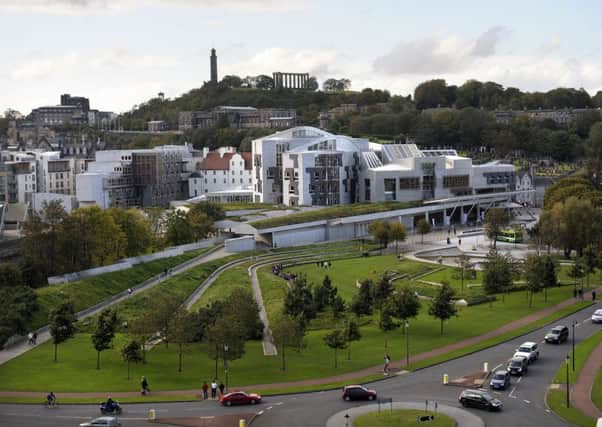Young people help population boom


The 2017 edition of Edinburgh Numbers shows that last year 23.2 per cent of males in Edinburgh were aged 16-29, as were 24.1 per cent of females in the city. That compares with all-Scotland figures of 20.4 per cent for males and 17.6 per cent for females.
Altogether the 16-29 age group in the Capital totalled 120,000 in 2016 - but that is set to fall to 106,900 by 2026 before rising again to 114,900 by 2039.
Advertisement
Hide AdAdvertisement
Hide AdThe number of under-16s is projected to grow steadily from 77,400 in 2016 to 87,200 in 2039.
Older people make up proportionately less of Edinburgh’s population than Scotland as a whole, but numbers in the Capital are still expected to rise significantly - with over-75s projected to increase from 35,600 in 2016 to 65,000 by 2039 and the 65-74 age group expanding from 40,300 in 2016 to 56,200 by 2039.
Edinburgh’s population increased to over half a million last year for the first time in its history.
Between 2006 and 2016 the Capital’s population increased by 12.2 per cent - more than double the 5.3 per cent rise seen across Scotland as a whole and second only to Manchester (16.7 per cent) among UK cities.
Advertisement
Hide AdAdvertisement
Hide AdEdinburgh’s population increase comprised a 2.6 per cent rise as a result of “natural change” and a 9.6 per cent rise in net migration - double the increase for Scotland as a whole.
A total of 35,300 new workers registered from overseas over the past three years, 71 per cent of them from Europe.
Spain was the country with the largest number of overseas workers registered in Edinburgh last year (5110), closely followed by Poland (5080), then Italy (3280), India (2200) and France (1690).
Edinburgh accounted for 55 per cent of all Spanish overseas workers registered in Scotland, but only 19 per cent of Poles.
Advertisement
Hide AdAdvertisement
Hide AdOverseas workers registrations to Edinburgh more than doubled in Italy, Romania, and Bulgaria between 2011-13 and 2014-16.
The Capital’s child population increased by 11.4 per cent, compared with a fall of 1.1 per cent for Scotland as a whole.
The document shows a total of 29,750 pupils in the Capital’s council-run primary schools; 18,150 in council secondary schools; 11,030 in independent schools, 630 in special schools and 10,320 receiving publicly-funded early learning and childcare.
Almond ward, which includes Queensferry, Kirkliston and Cramond, has the largest number of school pupils (4600), with Pentland Hills, Liberton/Gilmerton and Portobello/Craigmillar also over 4000. City Centre ward had the fewest at 950, followed by Fountainbridge/Craiglockhart at 1390.
Advertisement
Hide AdAdvertisement
Hide AdSome 93 per cent of Edinburgh school leavers went on to “positive destinations” - education or employment - in 2016, a big improvement on the 88 per cent recorded in 2012. Last year 36.5 per cent went into higher education; 30 per cent got jobs; and 22 per cent to further education.
The city has the highest proportion of the workforce educated to degree level out of major UK cities - 55.1 per cent, compared with second-placed London on 52.1 per cent and last-placed Bradford on 23.9 per cent. A total of 80,700 students were enrolled in further or higher education in Edinburgh in 2016.
The Capital was second only to Manchester among major UK cities in the number of students per 1000 population.